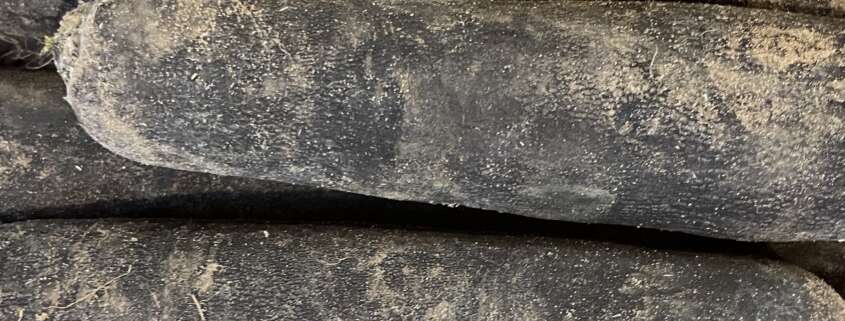Black radish
There is not much to plant in the vegetable garden in winter. We are in the season of trees and shrubs. But for traditional vegetables, there is not an abundance. And you have to want to go and hang out outside… But what if you tried black radish?
Black radish
Known as Raphanus sativus var. niger, black radish is a variety of radish native to Southeast Asia. It has been cultivated for centuries in Europe and Asia for its edible roots. This plant belongs to the Brassicaceae family, the same family as cabbage, broccoli and common radish.
Black radish prefers light, well-drained soil rich in organic matter. It thrives in a temperate to cool climate. It can be grown in spring or autumn. Black radish seeds are sown directly into the ground. It is best to plant them at a depth of about 1 to 2 centimeters. Black radish needs regular watering to ensure consistent growth and avoid the bitter taste that can develop in drought conditions. In autumn, you are relaxed, especially if the rain takes care of natural watering!
Root harvesting can usually be done about 6 to 8 weeks after sowing. The roots should be harvested before they become too large, as their texture can become fibrous.
Advantages
Black radish is a versatile vegetable that can be eaten raw, cooked or even fermented. It not only adds tangy flavor to dishes but also offers health benefits.Black radish is a good source of nutrients. It is rich in fiber, vitamins (especially vitamin C) and minerals such as potassium and magnesium.Traditionally used in herbal medicine for its medicinal properties. It is attributed with beneficial effects on digestion, the liver and the gallbladder.Like many vegetables in the Brassicaceae family, black radish contains antioxidant compounds.It is a low-calorie vegetable, making it a healthy choice for those following a balanced diet. You see that with all these advantages, it would be a shame to do without this beautiful creature. And when it comes to cooking, it’s cool too!
The varieties
And if you become a black radish pro, here are some varieties that will satisfy you. Be careful, this is a small selection, there are others!We start with the “classic” (Raphanus sativus var. niger). This is the most common. It has black outer skin and white flesh.Black winter radish (Raphanus sativus var. Niger ‘Münchner Bier’). This variety is grown for its ability to withstand low temperatures. She has an elongated shape and black skin. Perfect for corners where it’s chilly!The Spanish black radish (Raphanus sativus var. niger ‘Saxa’). He stands out because he is round instead of elongated. The flesh is white. It is often used in Mediterranean cuisine.Black radish with pink flesh (Raphanus sativus var. niger ‘Black Big Long Market Gardener’). Unlike the others, it has pink flesh inside.We finish with ‘Daikon’, originally from Asia and characteristic for its very elongated shape. It has a mild flavor and is often used in Asian cuisine, whether raw, cooked or marinated.With all this, you have choices!
And the sensitivities?
Obviously, these black radishes can have slight problems. Here are some diseases and bugs that can be found during cultivation.If the season is too wet, they can catch Downy Mildew. We know it from tomatoes. Downy mildew is a microscopic fungus, which can affect leaves. It usually appears as yellow or brown spots followed by white felting.Regarding pests, especially in a greenhouse, watch for aphids. These sap suckers can colonize the upper parts of plants. It’s up to you to crush them regularly.In summer, they can, like all cabbages, be attacked by flea beetles. But in winter, we are quiet!In summary, you are not taking a big risk by installing these black radishes. There is space in the vegetable garden in winter, it would be a shame to deprive yourself of it!




Leave a Reply
Want to join the discussion?Feel free to contribute!